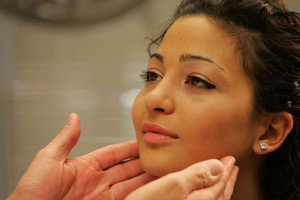Watch video – Plastic surgery decreases for non Hispanic whites, increases for others
Posted by Elena del Valle on August 19, 2009

There was an increase in ethnic procedures
Photo, video: American Society of Plastic Surgeons
According to a recently released report from the American Society of Plastic Surgeons (ASPS), between 2007 and 2008 there was an increase in plastic surgery procedures among all groups except “Caucasians” (we assume that refers to non Hispanic whites since they list Hispanics separately and Hispanics can be of any race). While there was a 2 percent decrease among non Hispanic whites, there were 3 million ethnic procedures representing an 18 percent increase among Hispanics, a 10 percent increase among African Americans and a 5 percent increase among Asians. It is likely this increase parallels national demographic changes and the overall growth in ethnic markets. Scroll down to watch an ASPS video on the subject.
“We’re seeing a rise in Hispanics opting for cosmetic procedures that coincides with the growth we’re seeing in the nation’s population,” said John Canady, MD, president, ASPS in a press release. “Less social stigma, as well as, advances in procedures allow patients to maintain their ethnic look. While the majority of patients continue to be Caucasian, the profile of the typical patient is changing.”
The report indicates 91 percent of all procedures were performed on women. Overall, cosmetic procedures, especially minimally invasive and less expensive options, increased 3 percent. There were 11 million cosmetic procedures performed during that time period. Surgeries increased among women 30 years old and older although there was a greater increase among women 40 and older. Fewer young women opted for surgery than in the previous year.
There was a noticeable increase in minimally invasive procedures like laser skin resurfacing, Botox and laser treatment of leg veins, and a decrease in invasive procedures like liposuction, Tummy Tucks, breast augmentation and face lifts. At the same time, there was an increase in reconstructive procedures such as breast, birth defect and hand reconstructions.
Some analysts believe these changes are due to the economic recession. As fewer patients opt for cosmetic procedures more doctors offer reconstructive procedures to make up the difference in income. In the past they may have been less willing to accept or pursue reconstructive procedures because of the extra insurance paperwork and added inconvenience.
There were increases in procedures performed in an office (rather than a clinic or hospital). Also more patients chose to have several procedures performed in one visit and return to the same doctor. The Pacific Mountain area had the greatest number of procedures, 3.5 million.
To produce the report and ensure objectivity in the gathering, analysis and publication of its procedural statistics, ASPS partnered with Data Harbor Solutions, a health care industry data management and technology development company. As part of the process researchers aggregated and extrapolated the results to the entire population of more than 24,000 physicians most likely to perform cosmetic and reconstructive plastic surgery procedures.









